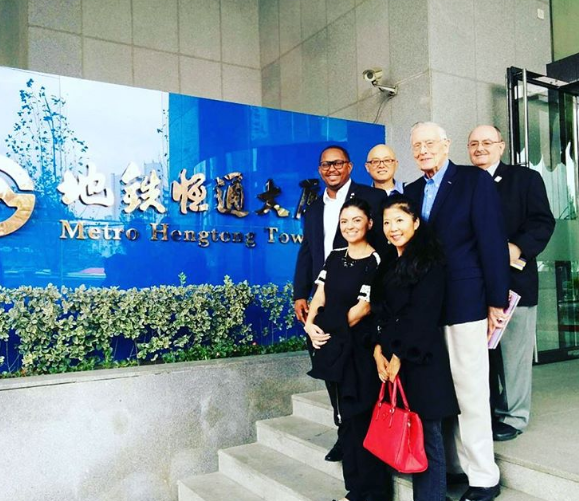
Photo courtesy of Councilwoman Lena Gonzalez’s Instagram.
They saw the Great Wall. They absorbed the culture. And they took away some valuable pointers regarding smooth-running, world-famous Chinese transportation.
Long Beach councilmembers Rex Richardson and Lena Gonzalez recently returned from a trip to China, on a mission to share strategies and experiences on sustainable development and transportation with a delegation from the Southern California Association of Governments (SCAG). SCAG is the largest Metropolitan Planning Board in the country, creating sustainable community plans for Imperial, Los Angeles, Orange, Riverside, San Bernardino and Ventura.
Richardson and Gonzalez, both members of SCAG’s governing board, said they learned a lot by exchanging ideas with China related to the goods movement, trade and transportation. Specifically, the group presented their 2016-2040 Regional Transportation Plan/Sustainable Communities Strategy (2016 RTP/SCS), which includes over $556 billion in investments in transportation options that also aim to decrease greenhouse gases in the region. Then, they took time to learn about public transportation from some of China’s most knowledgeable officials.
“The City of Beijing and the SCAG region are similar in size and complexity,” stated Richardson. “While goods movement is important to the world economy, both regions have suffered in terms of air quality and health.”
Gonzalez said she was interested in sharing information about how the Port of Long Beach has mitigated pollution in the last decade.
“The Port’s Clean Air Action Plan helps reduce the health risks of surrounding communities, while investing in new, cleaner technologies,” she said in a statement. “And we’ve seen a huge turnaround in the past 10 years-diesel particulates have been cut by 81 percent.”
Gonzalez noted the large amount of work left for the organization, however, including the $70.7 billion invested by SCAG to relieve 50 truck bottlenecks in the region through highway/rail grade separations and contributing to a zero or near zero emission freight system.
But the group didn’t just present. They took time to learn from Chinese officials, who have overseen heavy government investment in China’s urban transit and high speed rail lines. The Shanghai Metro system served as a superb example of the effectiveness of government investment in infrastructure, given its start with a single subway station in 1993 to its maturation into the longest subway system in the world.
As a sign of further collaboration, the two groups—SCAG and the Chinese Academy of Transportation Sciences—signed a Memorandum of Understanding, pledging to work together on sustainable economic development and greenhouse gas reduction strategies. The agreement is the second of its kind between SCAG and a Chinese research facility, according to Rex Richardson’s office.
“This collaboration is important for both countries,” said Hasan Ikhrata, SCAG’s executive director in a statement. “As the nation’s largest Metropolitan Planning Organization, we’re proud of the technical analysis that we use to support our long-range plans, and we’re happy to share that with our partners overseas.”
“Both China and Southern California have such strong economic ties, and we share incredible air quality challenges,” said Richardson in a statement. “Through our common bonds, these partnerships will help us meet those challenges and come out stronger together.”


